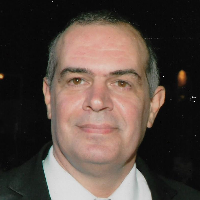Preprint
Article
HERTZIAN MOTOR: An Innovative Method to Obtain an Energy Efficiency of 90%, in Savings in Single-Phase Active Energy (Kwh), If The “Fan Law” Is Applied To PSMSM-Type Synchronous Motors Without The Need to Apply The Use of Variable Frequency Drives (VFD)
This version is not peer-reviewed.
Submitted:
17 December 2022
Posted:
19 December 2022
You are already at the latest version
A peer-reviewed article of this preprint also exists.
Abstract
This paper proposes how to reduce the consumption of active electrical energy (kwh) by 90.3% while maintaining the same mechanical work speed (RPM) at variable torque loads (fans or air-fluid blowers, centrifugal pumps are not included). of water and similar fluids), by using the “Fan Law” in an innovative way in PMSM-type synchronous motors (a comparative study never before carried out on the Fan Law). The work is carried out comparatively between brushless a-synchronous motors with starting loop (or motor with a short-circuited loop) versus brushed a-synchronous motors and PMSM-type synchronous motors without the need to use VDF (variable frequency drives), simplifying technology (electronics) and saving costs in an innovative way (R+D+i). The case study was developed on a design applied to a centrifugal air extractor/blower with PMSM/IPM type synchronous motor. Applying one of the fan affinity laws –with the impeller diameter 10.5 (mm) constant- the electrical power absorbed by the blower motor is proportional to the cube of the shaft speed: . Being “P” power (Watts) and “N” speed (RPM). Carrying out a comparative study between power (watts), active energy consumption (kwh) and rotational speed (RPM). This has a direct impact on the costs of residential and commercial single-phase active electrical energy consumption, measured in kilowatt-hours (kwh). Carrying out a comparative study between three (3) types of alternating current (AC) electrical machines, according to the NEMA (National Electrical Manufacturers Association); AC motors fall into three (3) categories. One (1), synchronous motors (Syncrhonous Motor) of three types: (1a) excitation by DC (DC Excited Motor), (1b) permanent magnet (Permanent Magnet Motor) and (1c) reluctance motor (Reluctance Motor) or motor Step by Step. Two (2), asynchronous induction motors of two types: (2a) Squirrel-Cage Induction Motor and (2b) Wound-Rotor Induction Motor. Three (3) series-wound motor (Series-Wound Motor) also called universal motor (they have carbons).
Keywords:
Subject:
Engineering - Electrical and Electronic EngineeringCopyright: This open access article is published under a Creative Commons CC BY 4.0 license, which permit the free download, distribution, and reuse, provided that the author and preprint are cited in any reuse.
Alerts
MDPI Initiatives
Important Links
© 2025 MDPI (Basel, Switzerland) unless otherwise stated





